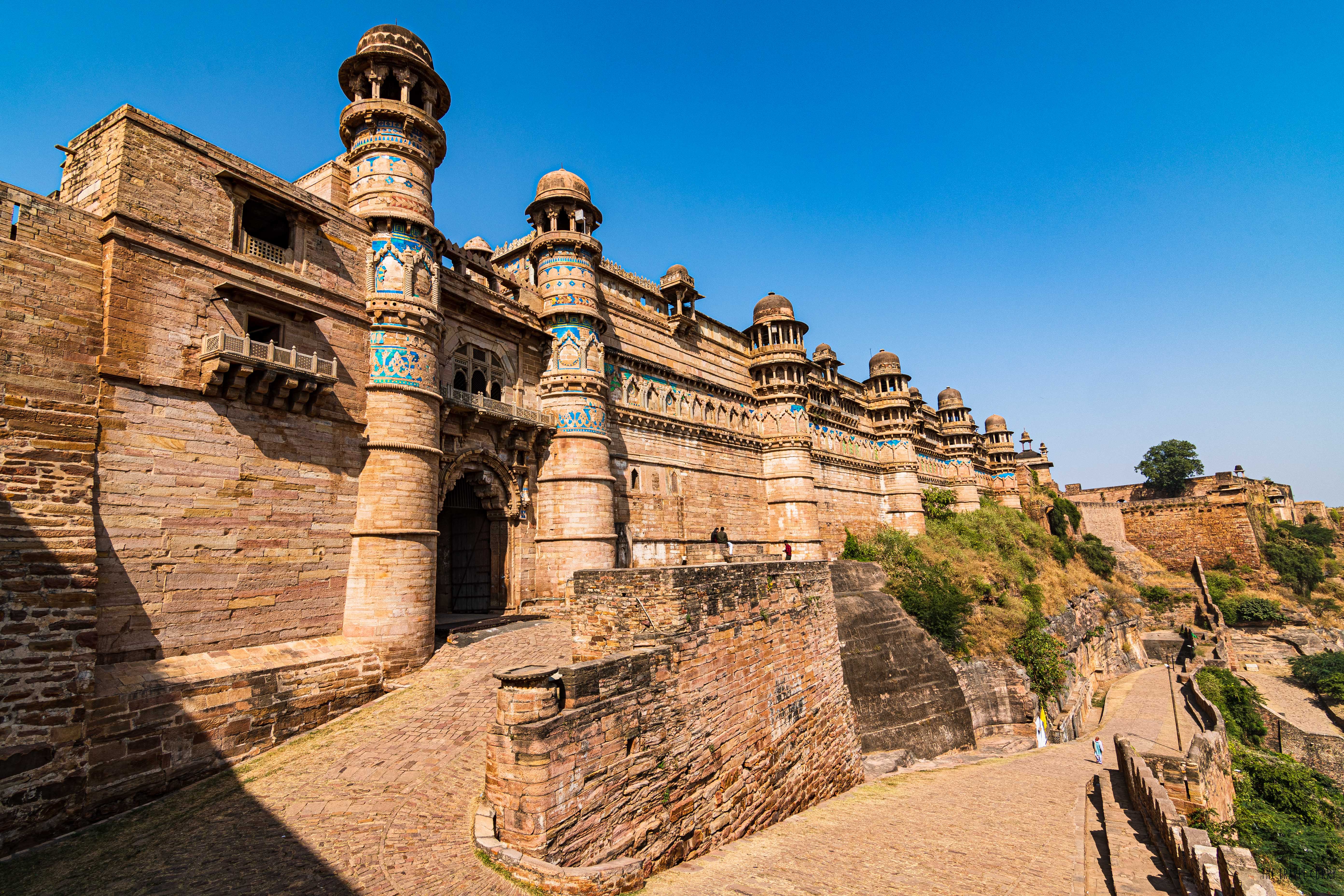
It wasn’t long after we returned from our short vacation to Chail. But you know our travel itch. Hence followed detailed planning for Orchha and Gwalior. We spent one of our two days in Gwalior touring the mighty Gwalior fort since this is one of the must-visit places in the city. Here is all about our journey into history at the magnificent fort of Gwalior in Madhya Pradesh.
Inside Gwalior Fort premises
A major cluster of structures lies under the care of ASI and the rest fall under the State Government. Primarily, the ASI structures include Man Singh Palace, Teli Ka Mandir, Saas Bahu Temple and Assi Khamba ki Baoli.
There are two entrance gates to the Gwalior fort. The eastern entrance, popularly known as Quila gate, allows no vehicles. It’s a steep trek. The western entrance is also known as the Urvai gate. The latter is thronged by Jain Tirthankara statues along the winding roads that lead to the fort. These statues are a part of Gopachal Parvat, accessible from outside the fort.

Monuments under ASI
Man Singh Palace

Also called Man Mandir, this grand palace from the late 15th century was fortified by Man Singh Tomar. This architectural marvel has 4 levels with two underground floors and two above the ground.
In summary, the turquoise blue tile work, elaborate motifs, latticework windows, and perfectly sculpted sandstones together make Man Mandir a stunning monument.
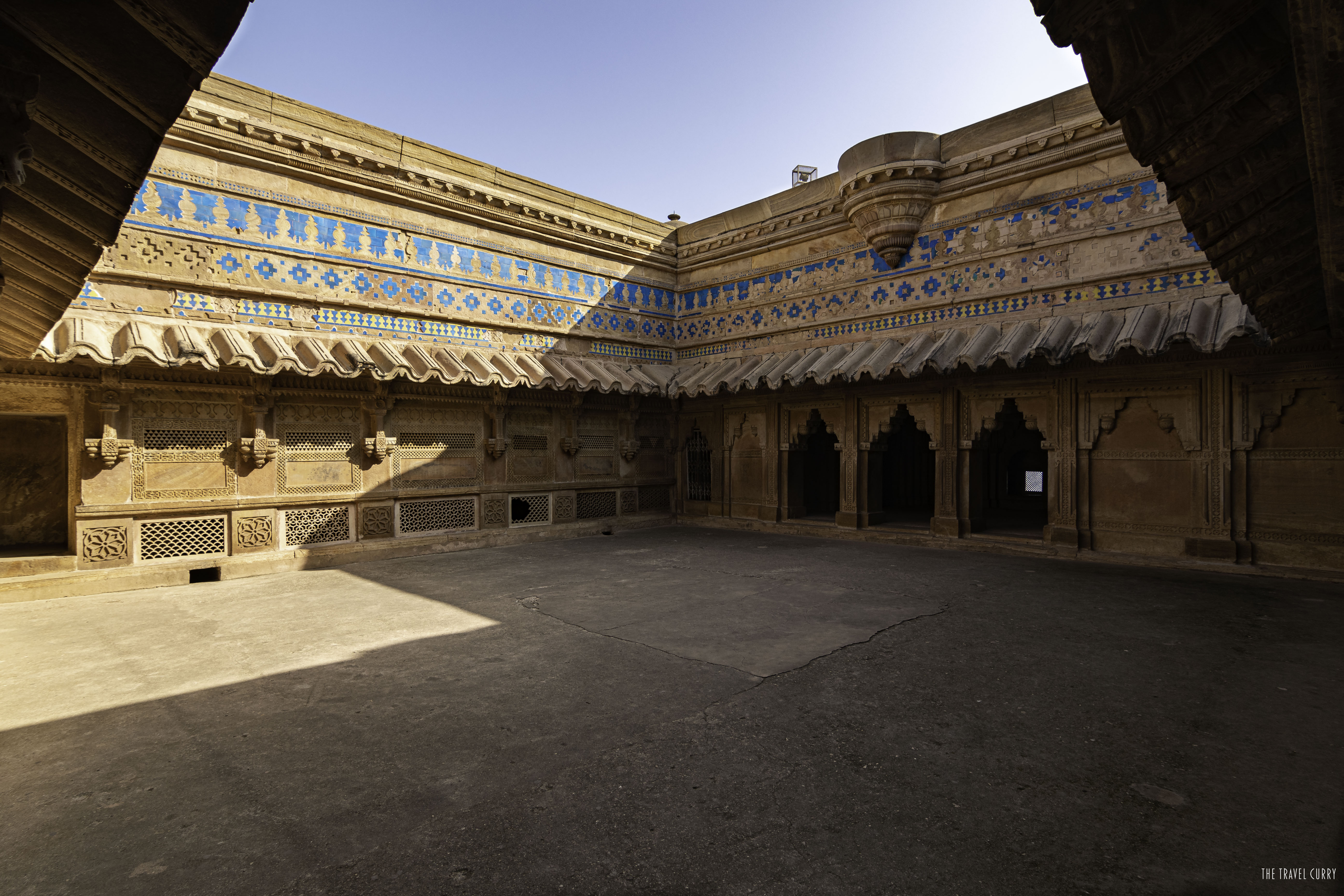
Blue stone work at Man Singh Palace
One of the underground floors houses prison cells. This floor is also believed to have secret escape passages. A water-tank, now covered, was used by the royal ladies for performing Jauhar when Gwalior Fort was uner attack. The eerie silence and dim lighting of the underground chambers are indeed scary.
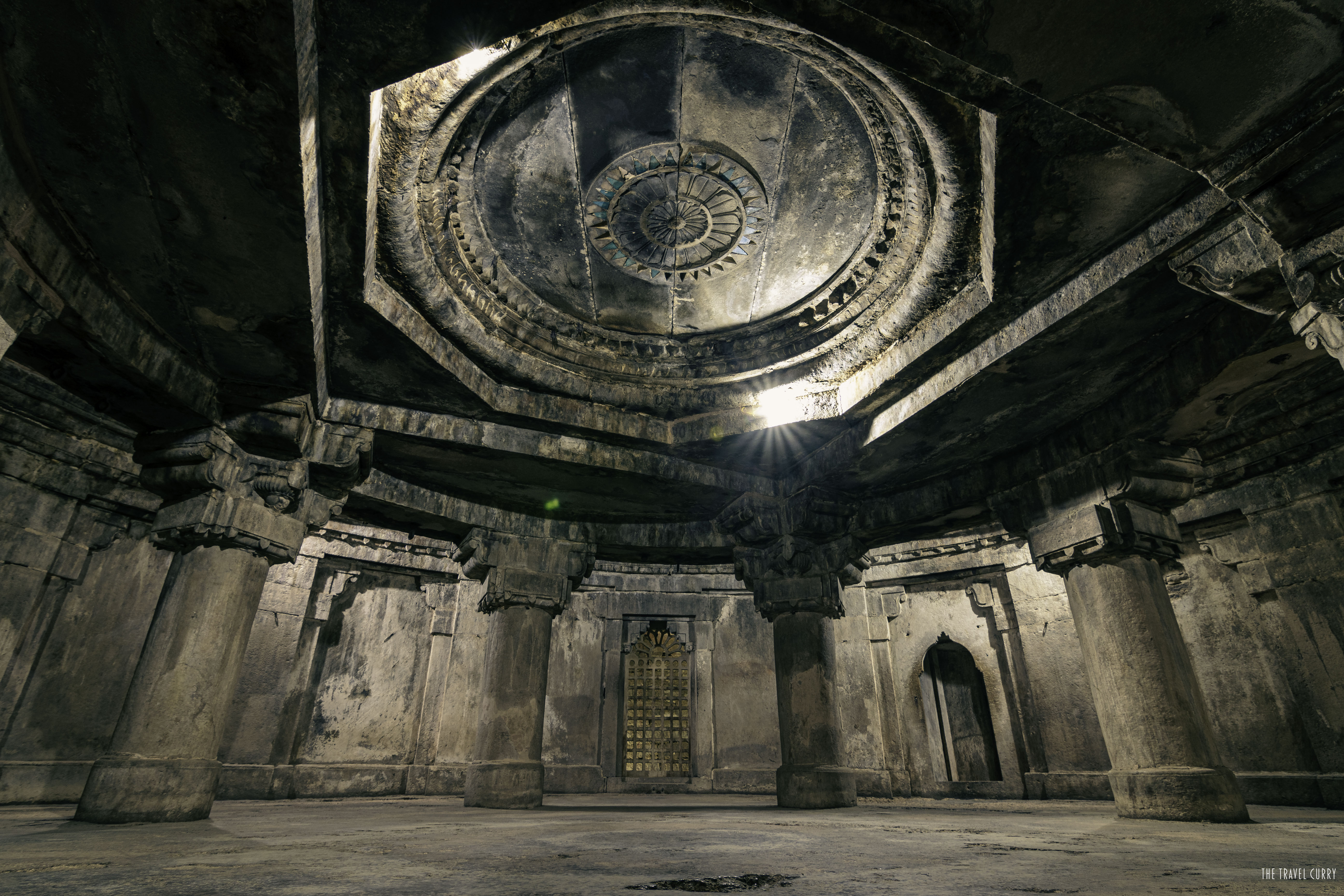
The top floors had chambers of royal ladies, and halls with balconies for the king to enjoy music performances. The gem studded walls and ceilings were ruined during the Mughal invasion.
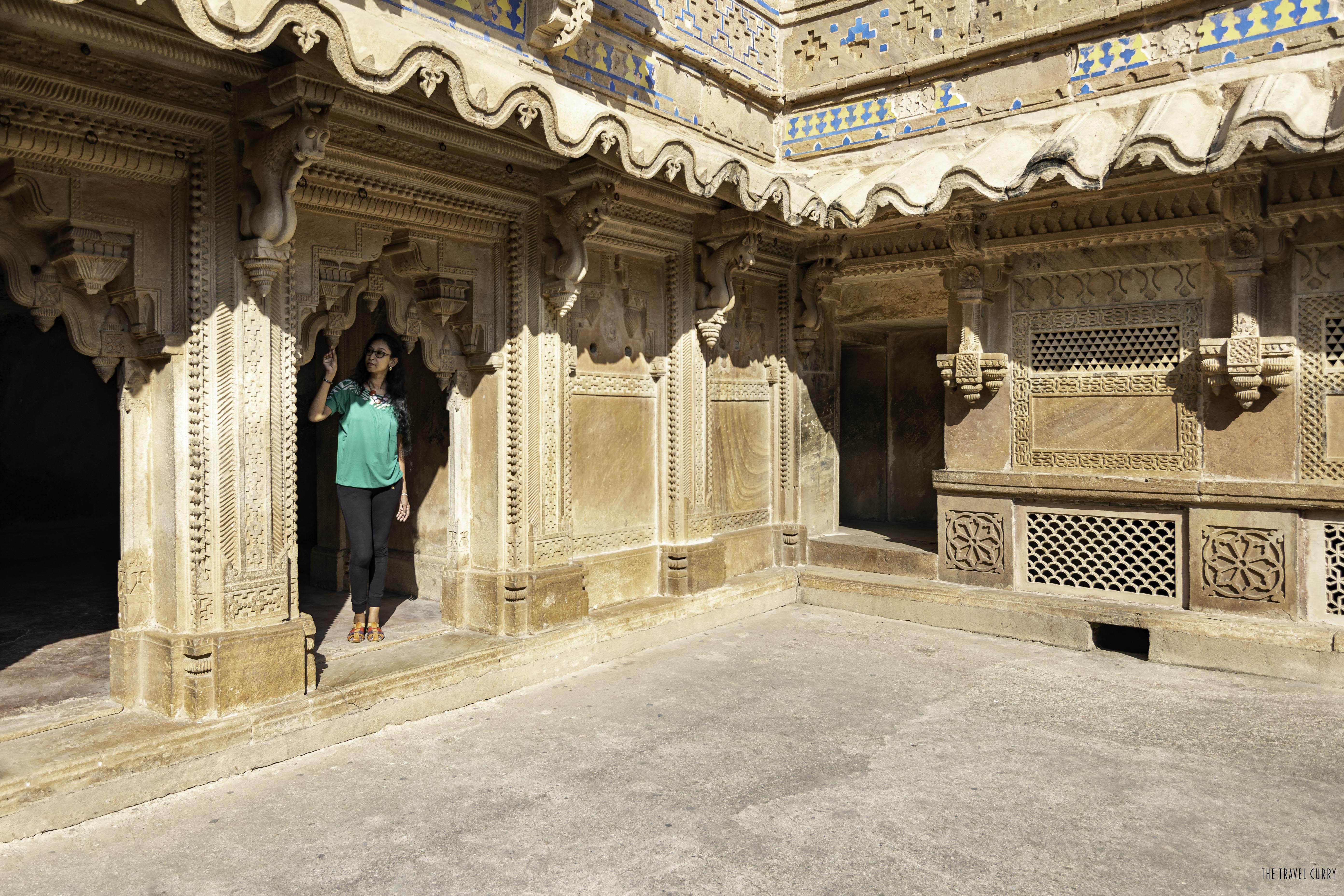
Saas Bahu Temple
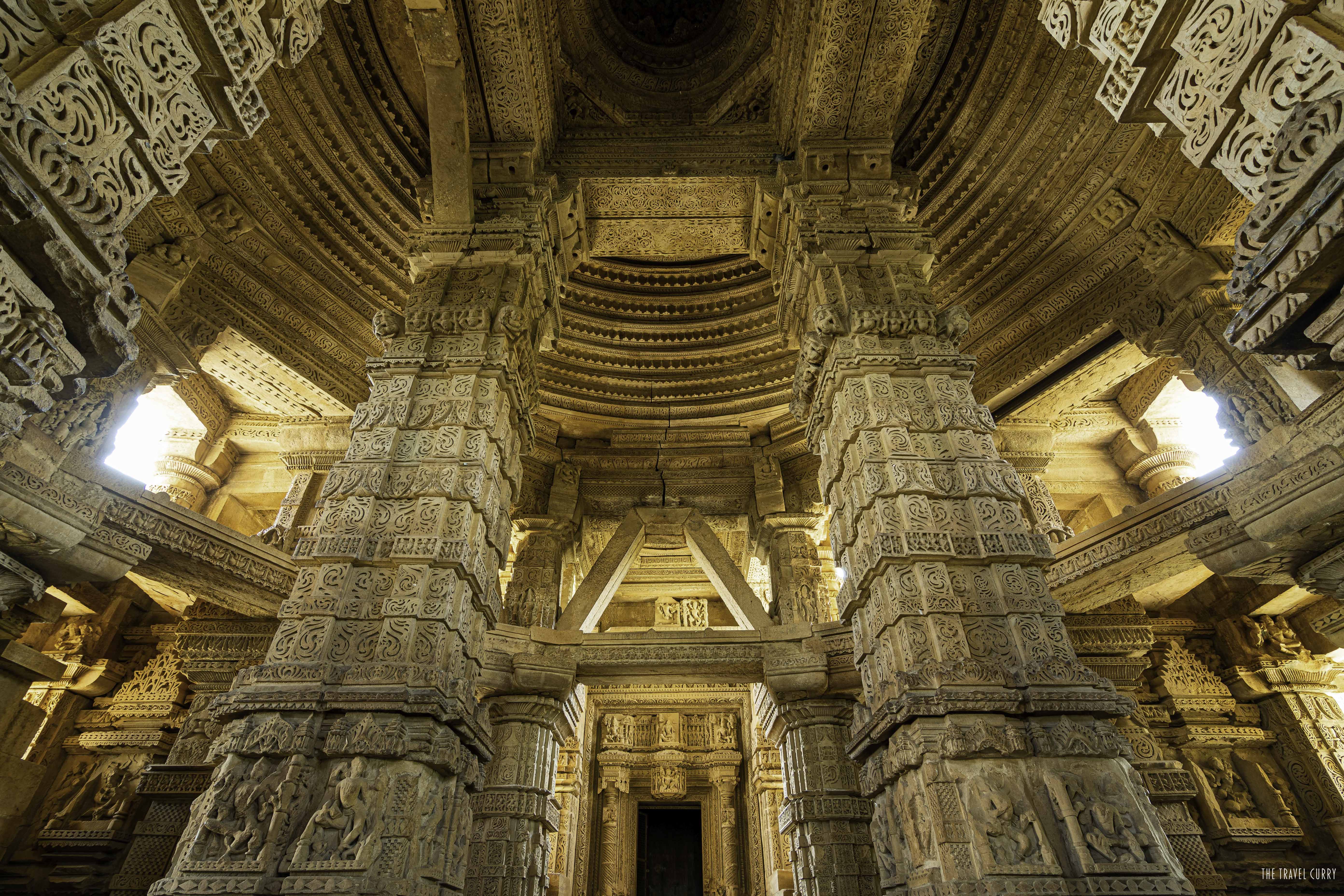
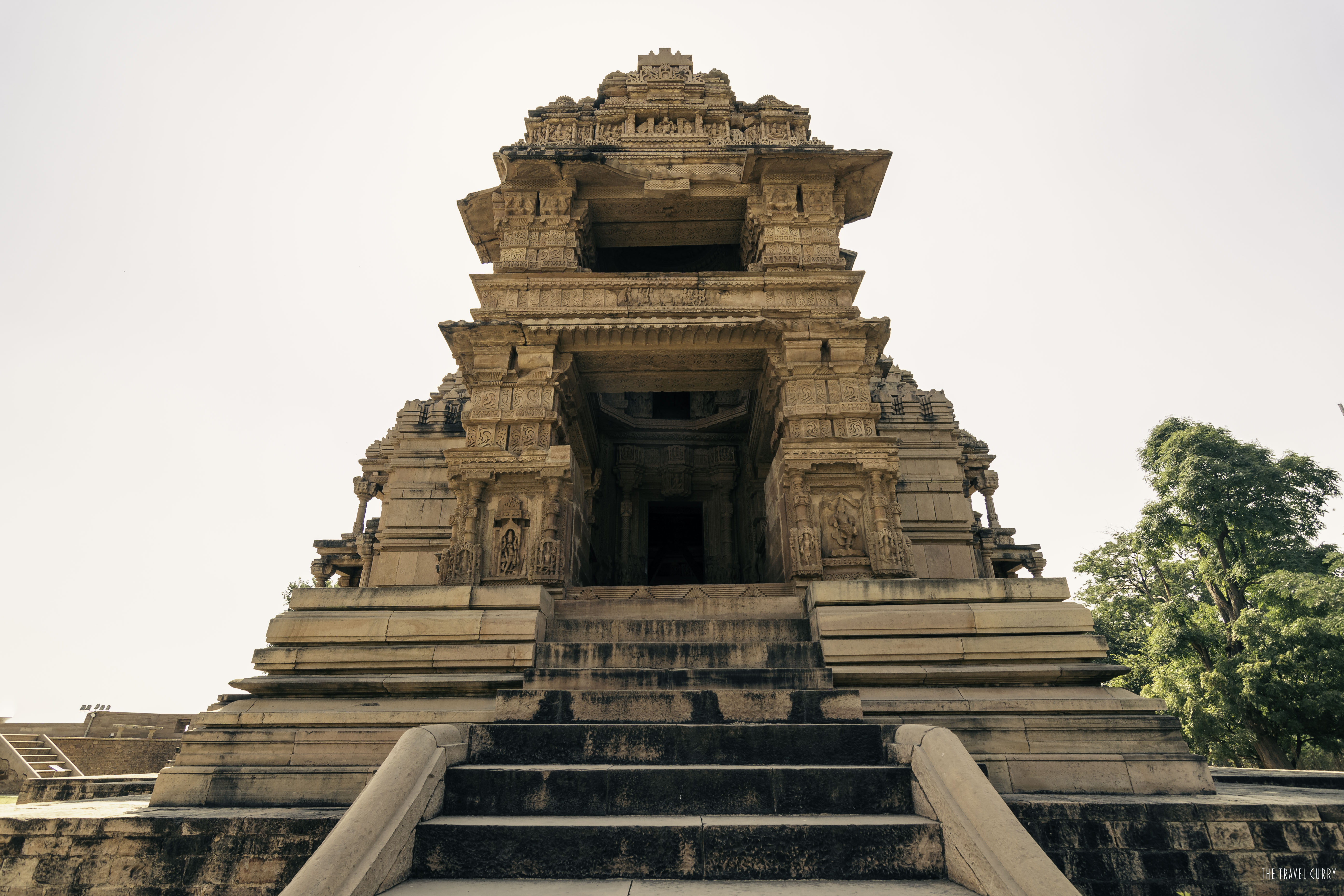
Dedicated to lord Vishnu, the temple’s original name was Sahastrabahu which literally means several arms (of Vishnu). Perhaps, locals had shortened the name for easy pronunciation and now refer to it as Saas Bahu temple.
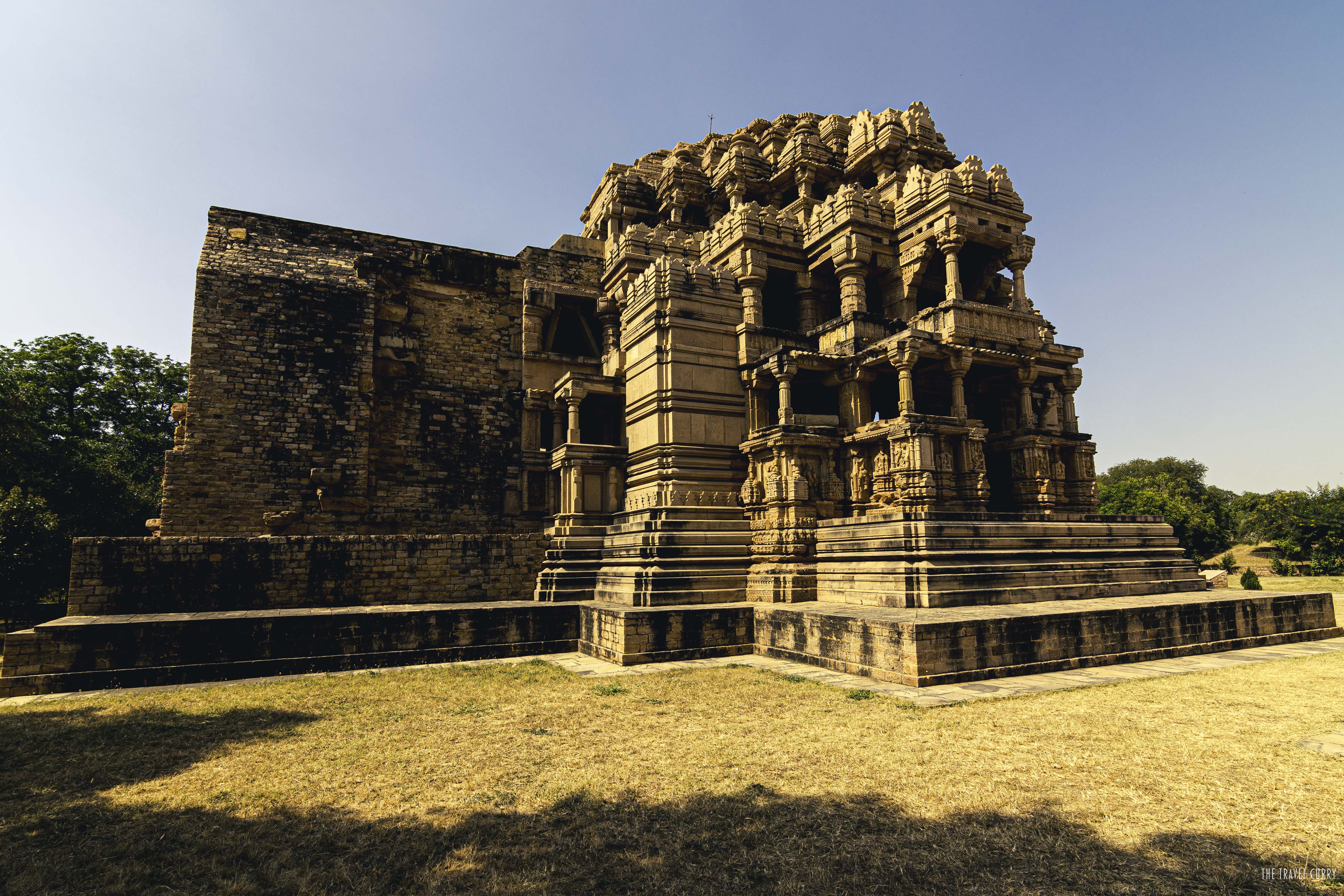
This 11th-century twin temple is one of the most attractive structures within the Gwalior fort premises. Consequently, the intricately carved pillars, etched ceilings, and awe-inspiring sanctum left us spellbound. Each stone weaves a lovely a story of the Rajput architecture.
Teli ka Mandir
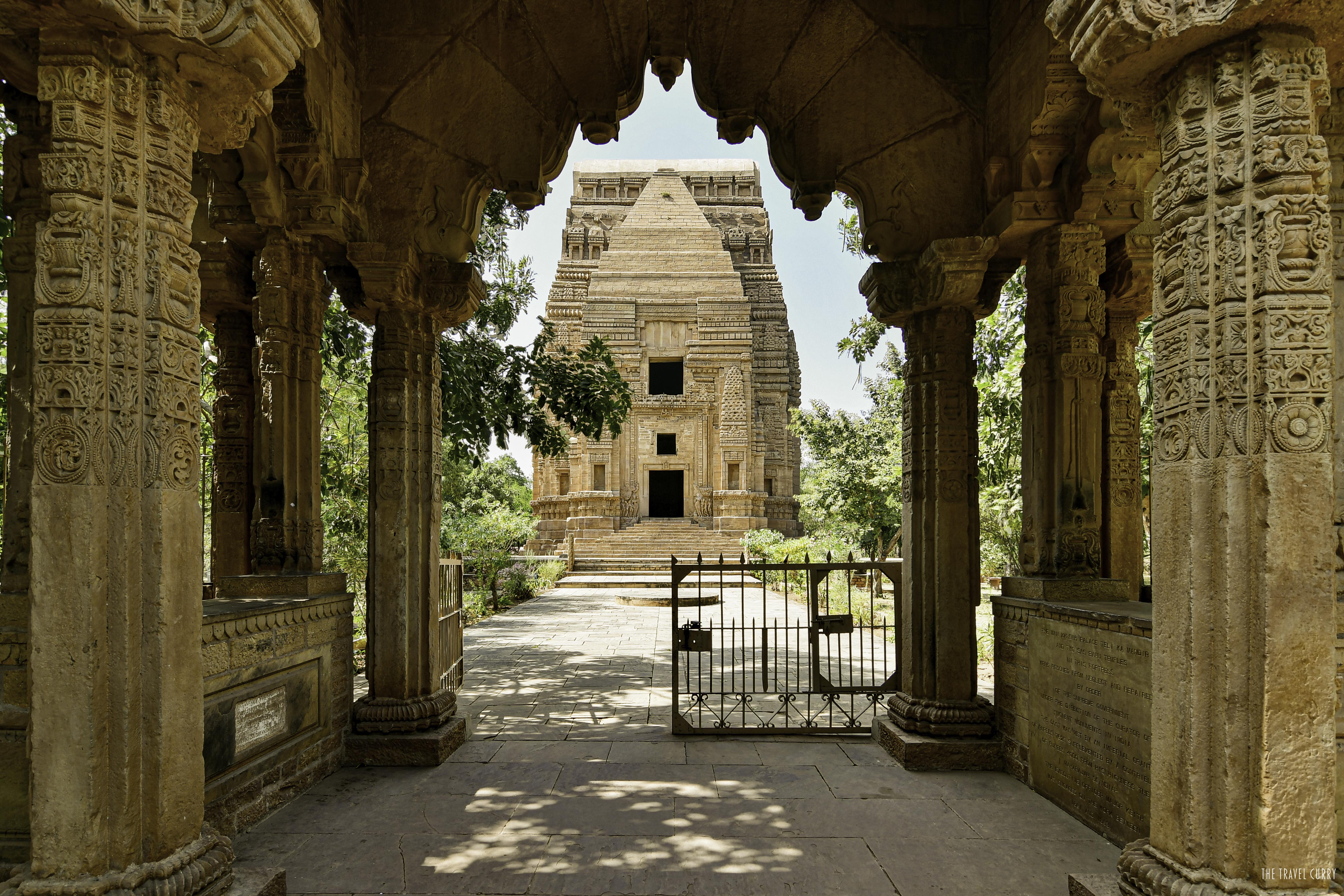
Constructed between the 8th and 9th century, Teli ka Mandir is an amalgam of Dravidian and the ancient Nagara style of architecture. What influenced the design of the temple is still a mystery. Whether it was the Buddhist, the Gupta era or South Indian influence, the temple is unusual in many ways. Unlike all Hindu temples’ square sanctum, Teli ka mandir has a rectangular sanctum. With a Garuda statue at the 11 meter high entrance door, the temple’s 80 feet tall tower and extensively carved outer walls are treat to eyes. Numerous other ruined structures surround the main temple.
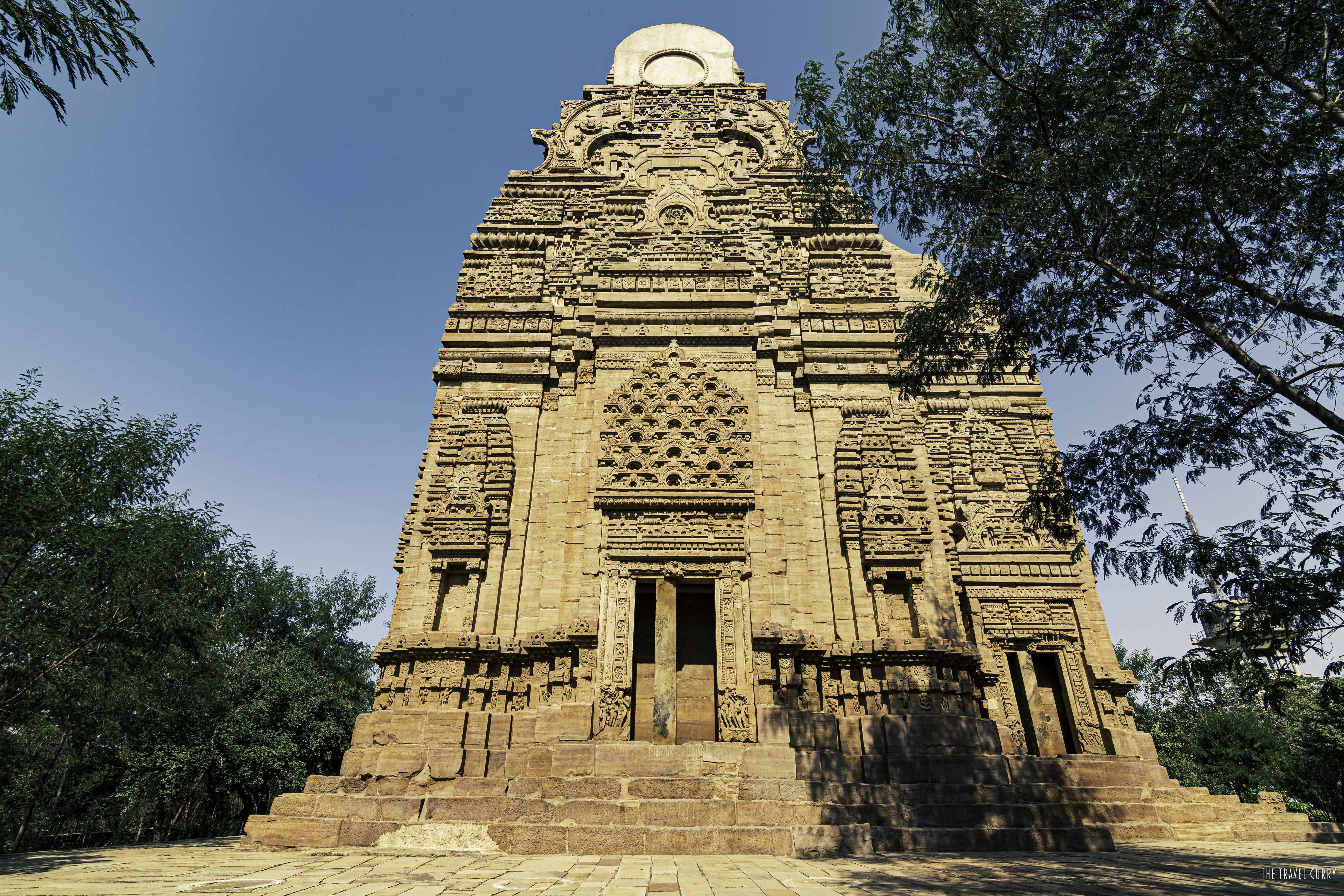
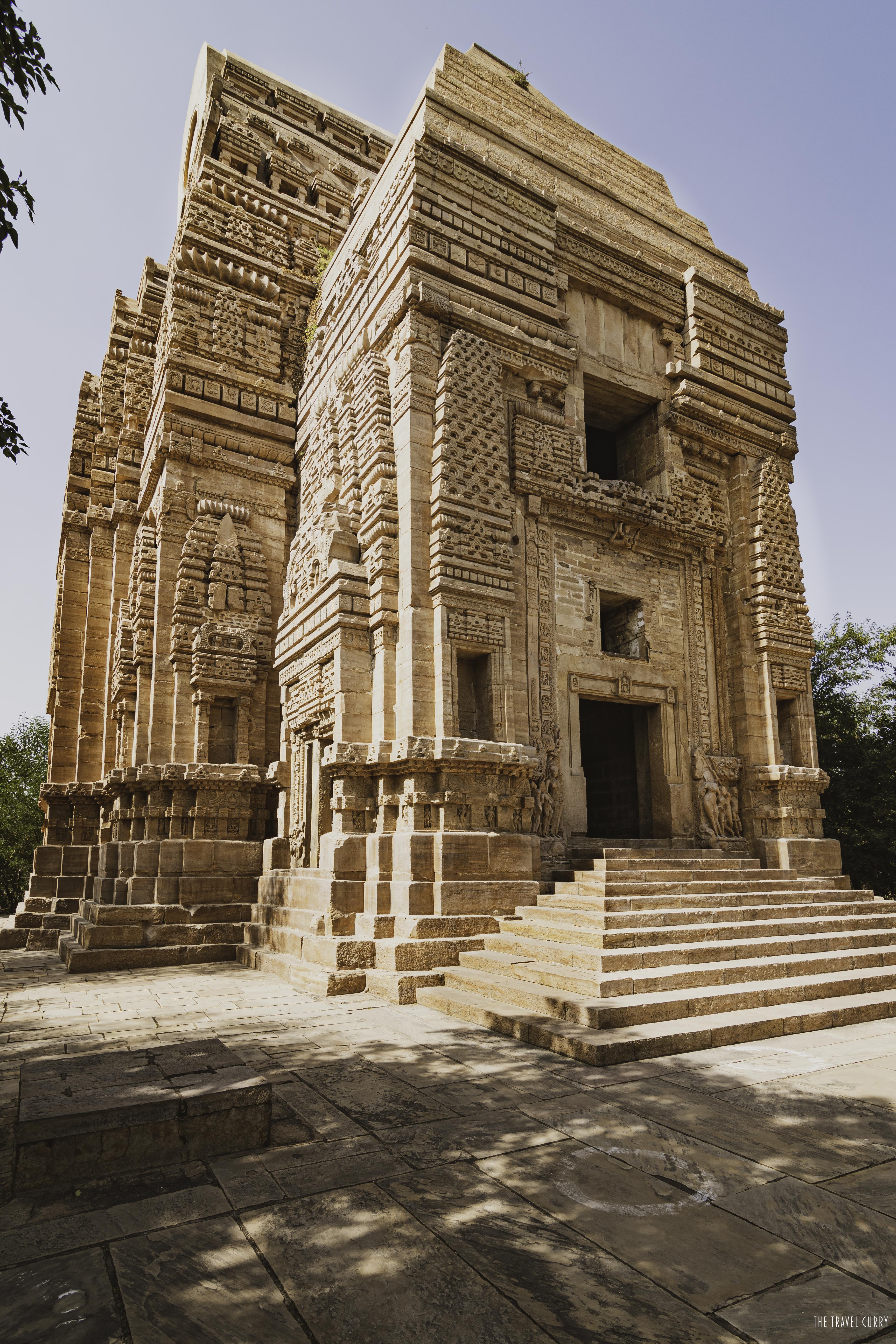
Assi khamba ki baori
As the name suggests, assi khamba translate to eighty pillars in Hindi. This is a historical circular step-well that was built by Raja Man Singh Tomar. The baori or stepwell can be reached via a stone hall comprising 80 pillars. The place gives a great view of the surrounding monuments and also makes a perfect spot for couple shoots.
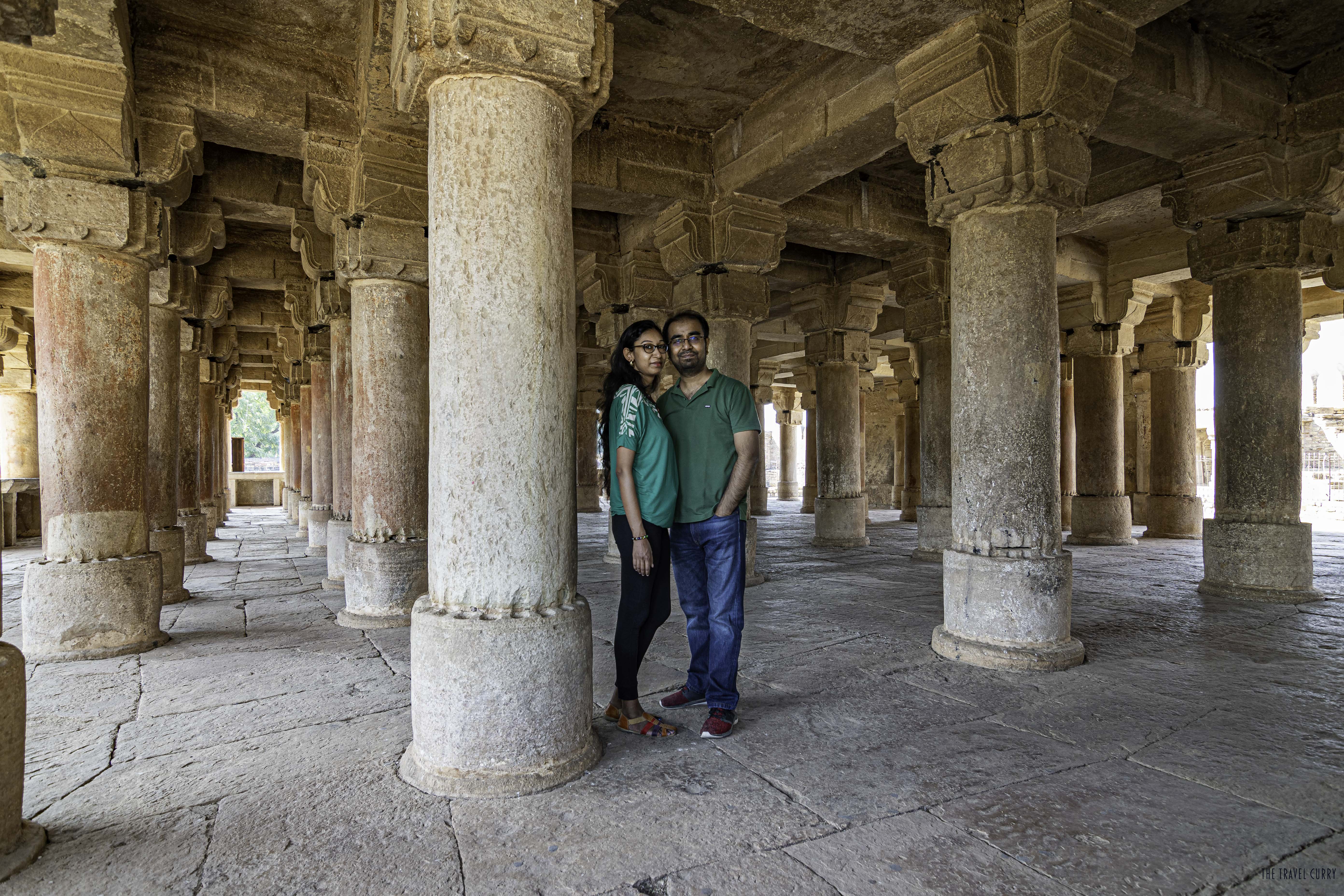
P.S- Use of tripods are strictly prohibited anywhere in the fort. We requested the guard to help us with the picture.
Structures under the State Government
Entry to the cluster of monuments under the state govt (Karan Mahal, Jahangir Mahal, Vikram Mahal, Shjahan Mahal, Jauhar Kund) costs Rs 10 only.
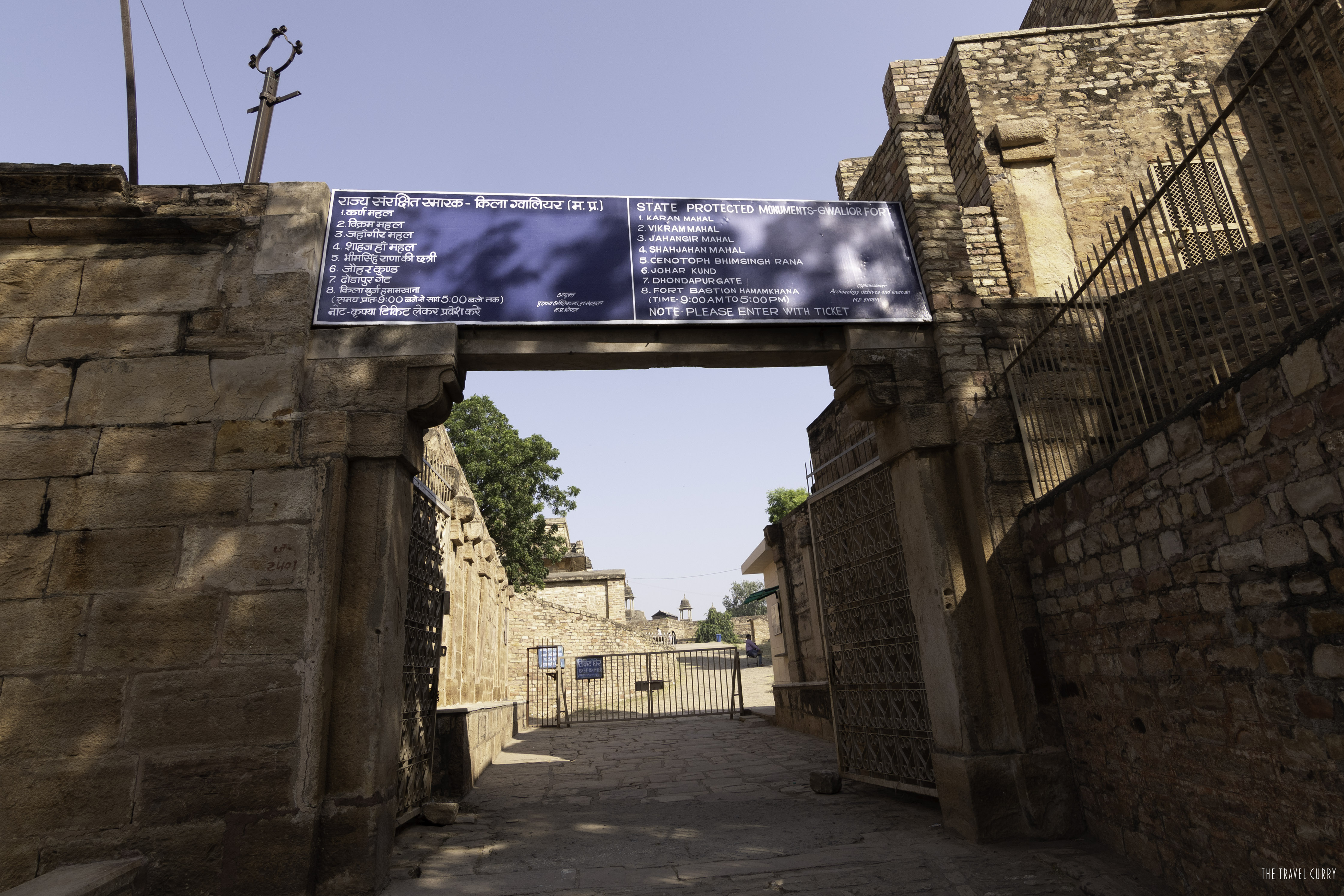
Karan Mahal and Vikram Mahal
Both the palaces face each other. The humble architecture and barely any carvings or stone work in both the monuments perhaps make them quite similar.
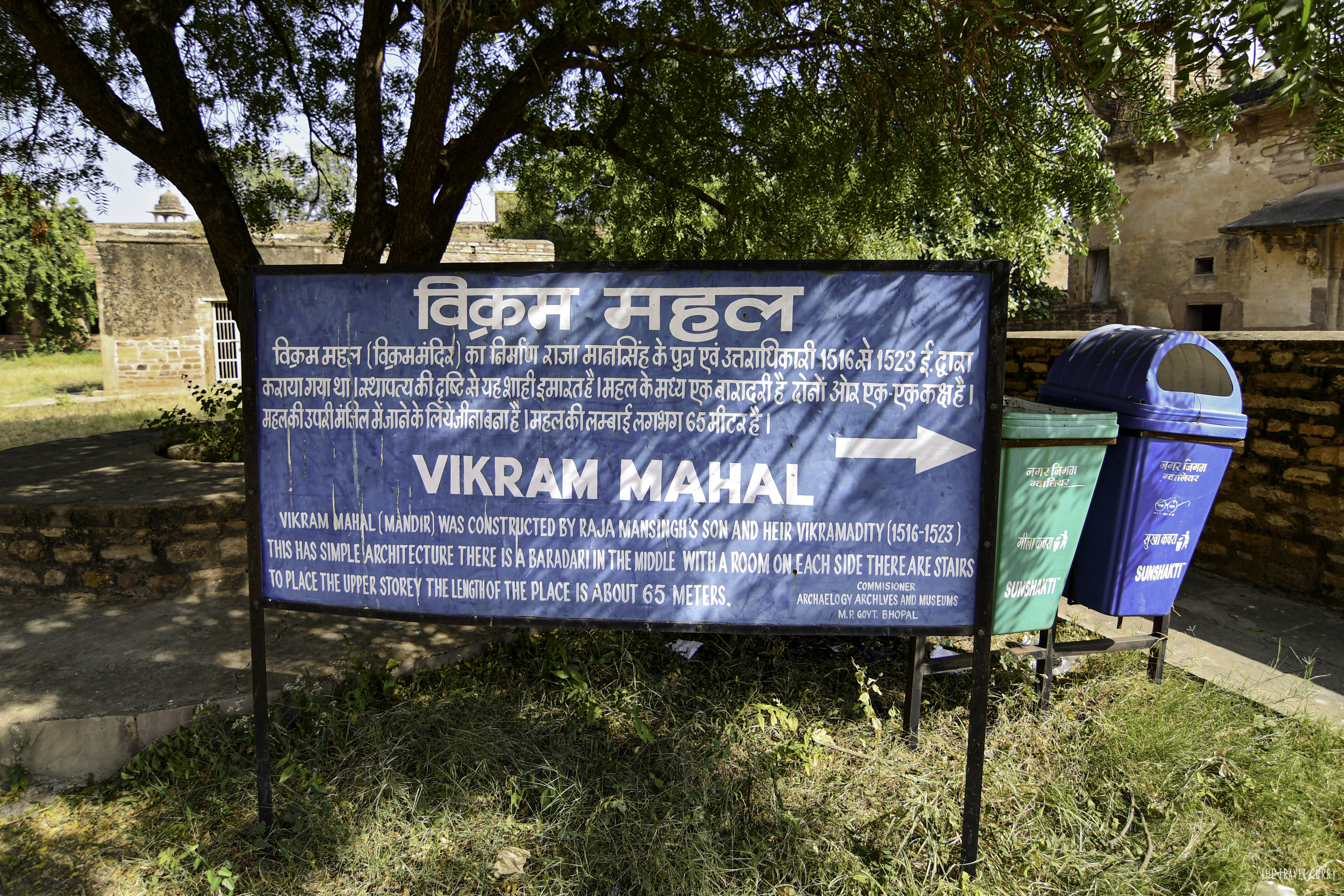
Chhatri of Bhim Singh Rana
This cenotaph was built in the memory of Bhim Singh Rana who had claimed Gwalior fort from Mughal rulers. Rana had built a lake, locally called Bhimtal near which his successor constructed a chhatri in his memory.
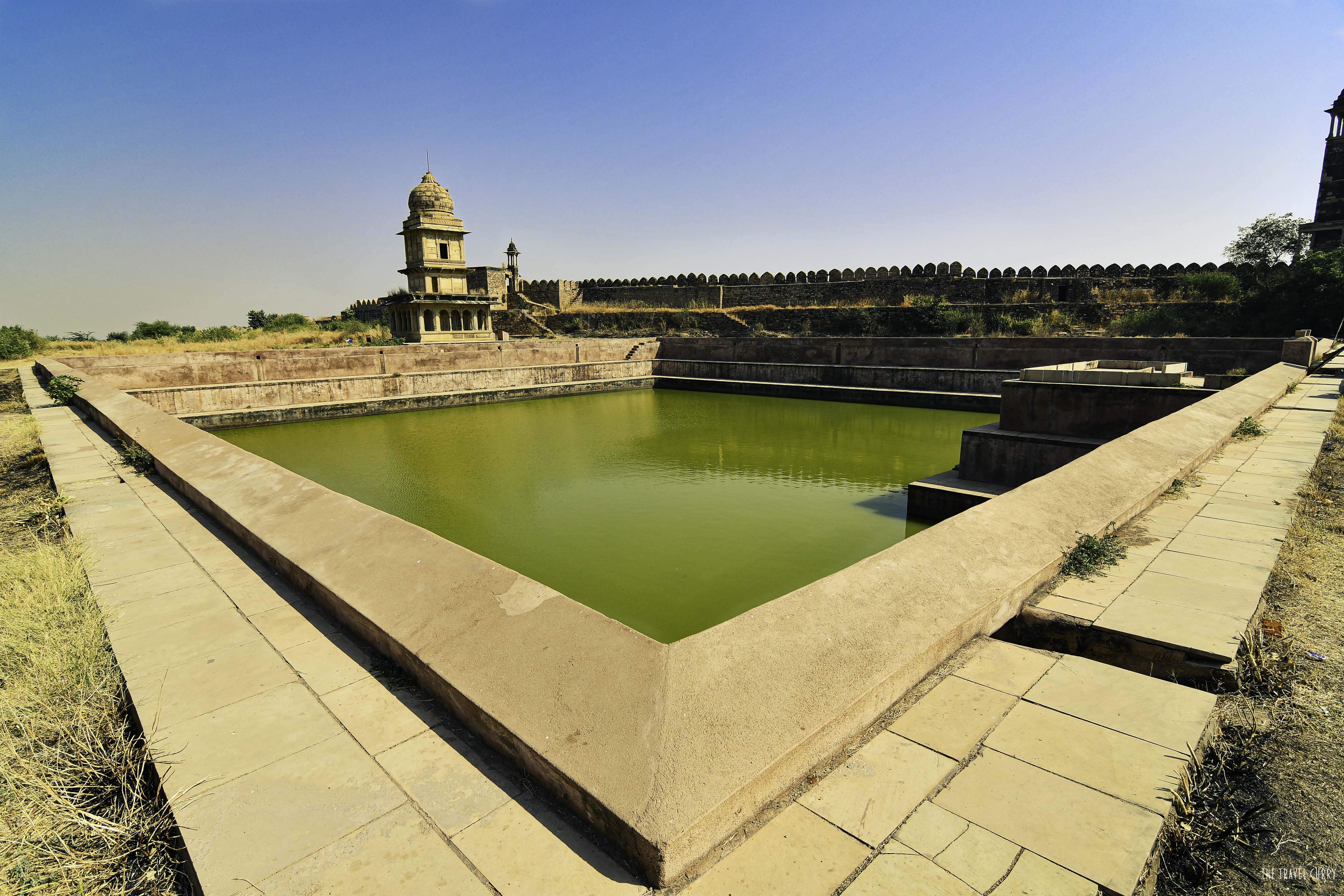
Jehangir and Shahjehan Palace
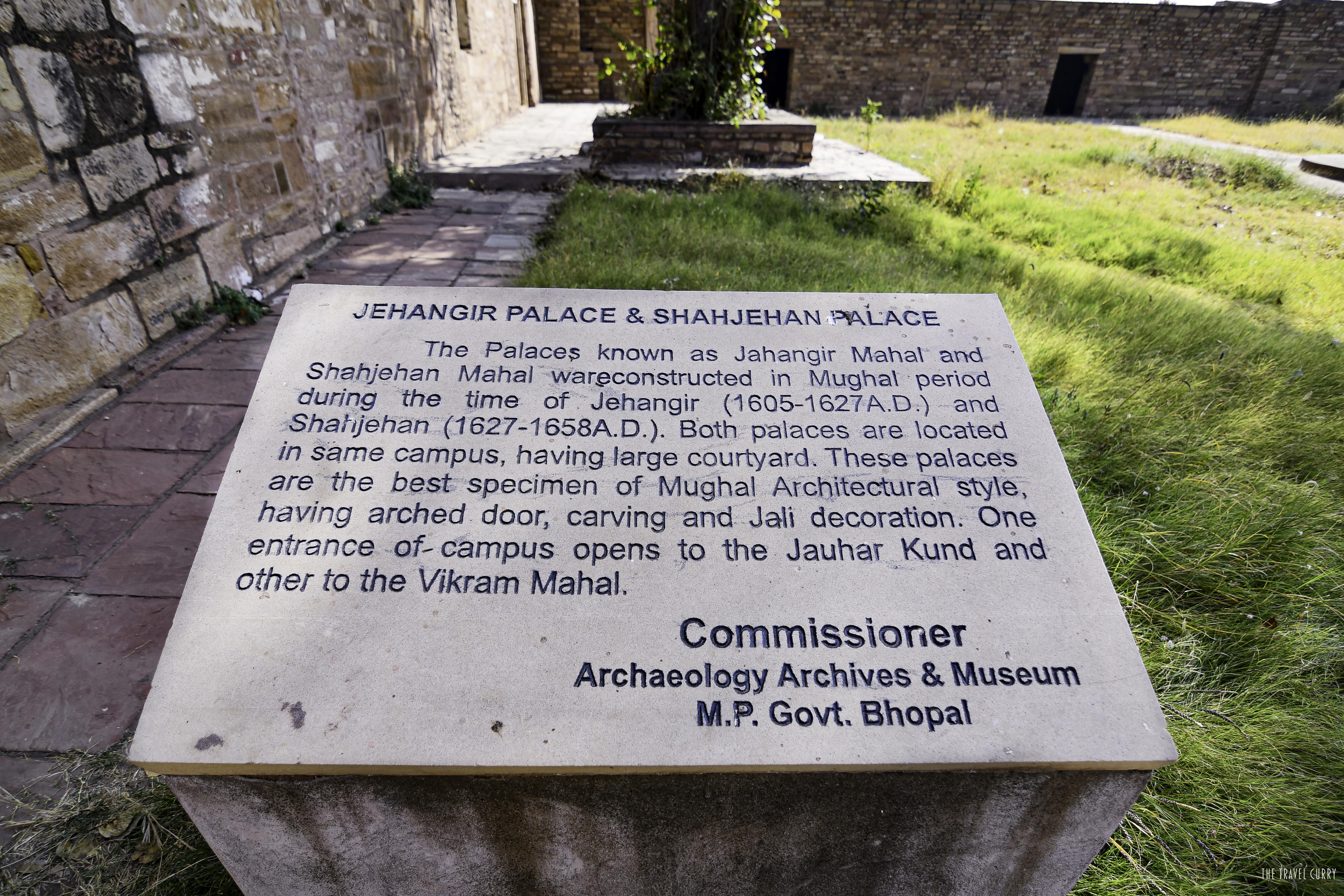
Jahangir Mahal was also known as Sher Mahal. It was later renamed Jahangir Mahal after its restoration by Jahangir. Emperor Shahjehan built Shahjehan Place with a Jauhar Kund in its open yard. Both the palaces are interconnected and opposite to each other.

Initially, the Jauhar Kund was a source of water for Jehangir Palace, Shahjehan Palace, Karan Mahal, and Vikram Mahal. The Rajput women committed suicide in this water tank at the time of the Mughal attack on Gwalior Fort in 1232 AD. Hence the baoli got its name as Jauhar Kund.
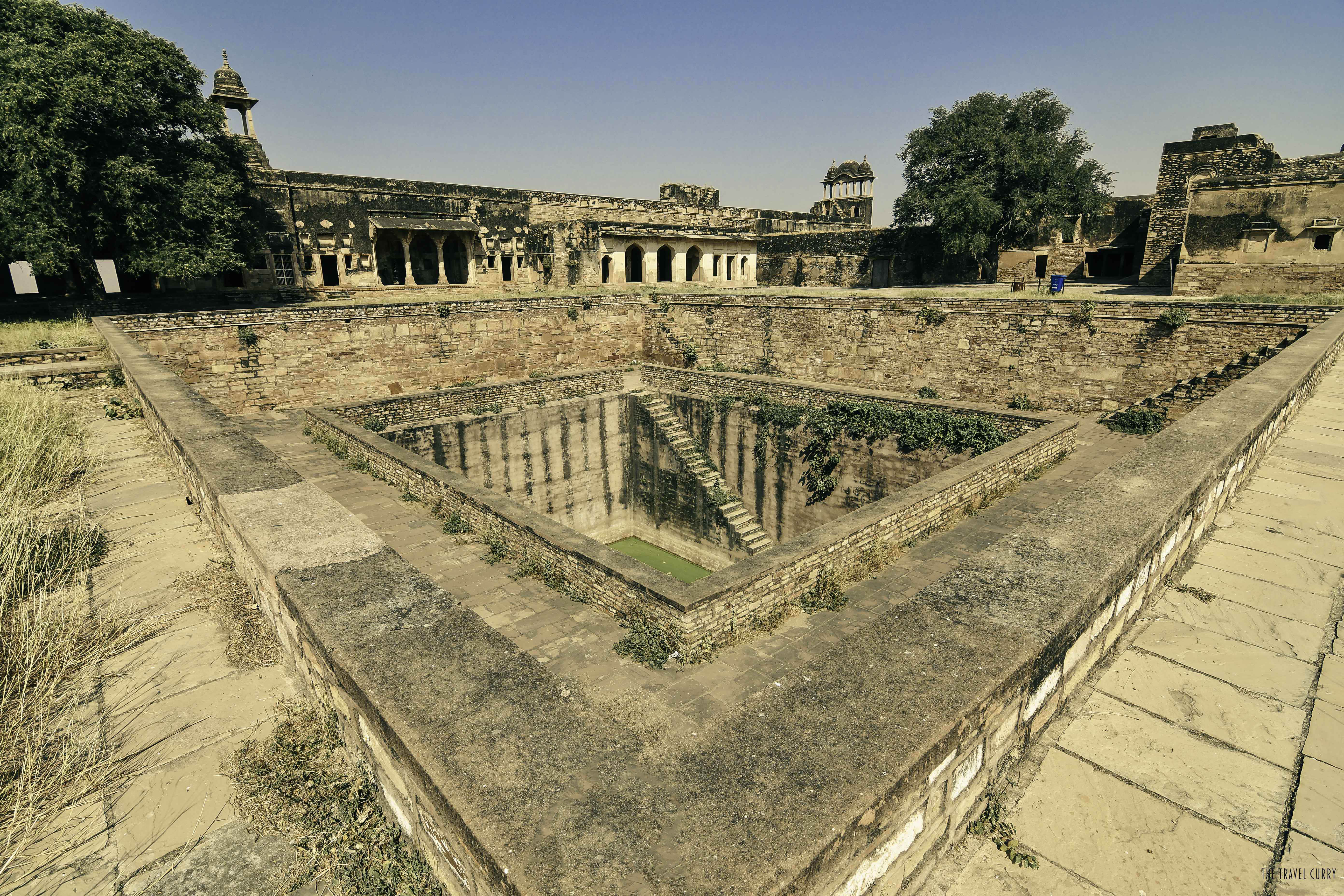
Other monuments inside Gwalior Fort
Gurudwara Data Bandi Chhor
Gurdwara Data Bandi Chhor is a memorial for the sixth guru of the Sikhs, Guru Hargobind Sahib. Mughal monarch Jahangir had imprisoned him at the tender age of fourteen for resisting Mughal rule. Together with 52 other rebellion kings, Hargobind Sahib was held captive inside the mighty Gwalior fort
World’s oldest zero
Gwalior takes pride in holding the World’s oldest reference of zero. Historians debate whether it was the Egyptians or the Chinese who invented the concept of zero. Nonetheless, the actual invention and design of zero are credited to an unknown Indian mathematician. Hundreds of years ago, she/he probably drew the first empty circle to symbolize nothingness or shunya, a concept that existed in Indian philosophy for ages.
Gurjari Mahal
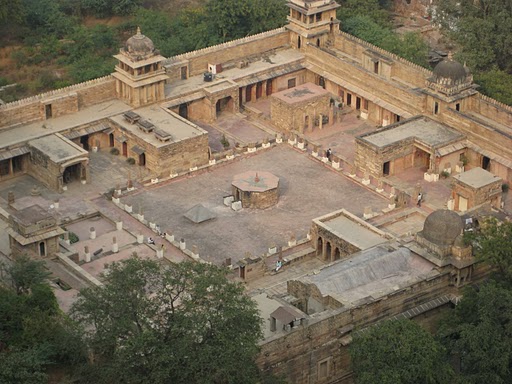
Raja Man Singh Tomar had built this mahal for his wife Mrignayani. Later, it became a museum that houses 28 spectacular galleries. The museum displays precious artifacts like precious stones, weapons, sculptures, pottery, jewelry, and more. Due to lack of time, we had to skip this beautiful palace.
With that, we come to an end of the journey inside the mighty Gwalior fort. Here are useful tips to tour the fort.
Best time to visit Gwalior– October to March or monsoon.
Timings– 9 am to 6 pm. The light and sound show starts at sunset.
Ticket price– The ticket price for visiting the ASI monuments is Rs 40 for Indian visitors and Rs 250 for International tourists. The fee for still cameras is only Rs 25. Above all, Gopachal Parvat can be toured separately and there is no fee for this place.
Time needed to complete the fort: Minimum 3 hours.
Useful info:
-Carry sufficient water and food. The canteen and shops inside the fort premises do not store in sufficient quantity and are too costly.
-Wear loose comfy clothes since you’d sweat after a lot of walking.
-Use of tripods is a punishable offense inside Gwalior Fort. However, pre-wedding or commercial shoots can be conducted after attaining permission.

Very nice blog. After going through the article, I realized that I perhaps missed several aspects of the Gwalior, detailed in your blog. I shall suggest everybody to go through this article before visiting Gwalior Fort. And further more…. The photos you have captured are very beautiful.